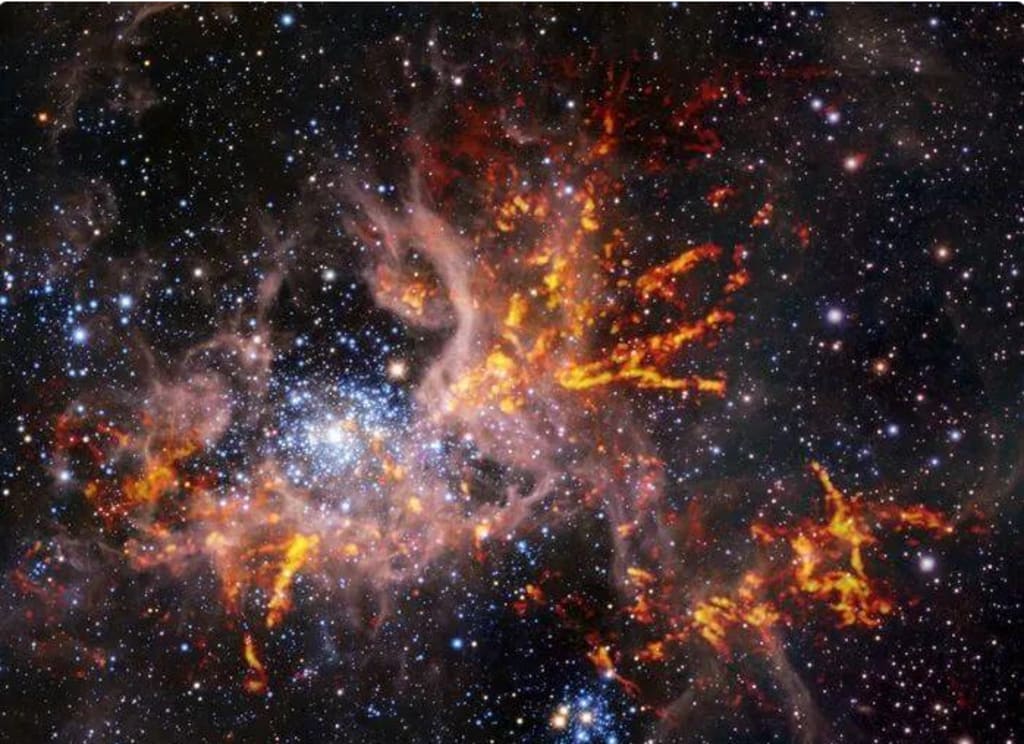Less than 100 km in diameter! Micro black hole found outside the Milky Way, surprisingly revolving around a star
Micro black hole discovered outside the Milky Way

We have the impression that a black hole is the most mysterious and massive object in the vastness of the universe. It has a powerful attraction that does not even spare the light around it. All are sucked in and do not reflect any visible light to the outside world, so the black hole is invisible to the naked eye.
- Black holes are the behemoths in the universe, such as the super black hole Sagittarius A* (Sgr A*) at the center of the Milky Way, which is well known. According to some studies, Sagittarius A* is 26,000 light years away from us, has a mass about 4 million times that of the Sun, and is about 24 million kilometers long in diameter.
On May 12, 2022, a team of researchers from the Event Horizon Telescope (EHT) released the first real color map of Sagittarius A*, showing the fiery red matter on the black hole's accretion disk. The black hole's tidal forces cause them to spin and collide at near the speed of light, producing temperatures of several million degrees Celsius.
But in reality, some miniature black holes are not as big as we think they are, at least not in size as big as the sun, and may be less than 100 kilometers in diameter.
Recently, a research paper published in Nature Astronomy said that a team of researchers from the Institute of Astronomy at KU Leuven, Belgium, finally discovered a miniature black hole outside the Milky Way after six years of observations using the European Southern Observatory's (ESO) VLT.
Do you know how small this miniature black hole is? About 24 times the diameter of the Earth, such a small black hole is rare in the entire universe.
It is known that this small black hole is located in the nearest extragalactic galaxy to the Milky Way. In many people's impression, the closest super galaxy to the Milky Way should be the Andromeda Galaxy, about 2.54 million light years away from us.
But in fact, the Large Magellanic Cloud is much closer to the Milky Way, only 160,000 light-years away. With such a close distance and the fact that the Large Magellanic Cloud is a dwarf galaxy, astronomers have even called it a satellite galaxy of the Milky Way, much like the relationship between the Earth and the Moon.
The Large Magellanic Cloud is about 6,000 to 8,000 light-years in diameter and contains about 10 billion stars. The tiny black hole now discovered is in a binary star system called VFTS 243 in the Large Magellanic Cloud.
A binary star system is the most common stellar system in the Large Magellanic Cloud. It consists mainly of two large objects, a primary star and a secondary star. The secondary star rotates around the primary star, and the primary star "jiggles" slightly due to the gravitational pull of the secondary star, but the motion is not very large.
For example, a star revolving around a small black hole, or a red dwarf star revolving around a young star. These are the most common binary systems.
But there are some exceptions to the VFTS 243 galaxy, which consists of a tiny black hole and a giant blue star. The galactic black hole revolves around the star, as the tiny black hole is 9 times the mass of the Sun and the blue star is 25 times the mass of the Sun.
The super black hole at the center of the galaxy has a mass of about 4 million times that of the Sun and a diameter of about 24 million kilometers. According to this density, the diameter of the miniature black hole, which is about 9 times the mass of the Sun, is about 307,880 kilometers, and the straight-line distance of the Earth is about 12,800 kilometers, which is about 24 times the diameter of the Earth.
But I think the accuracy of the data of the super black hole at the center of the galaxy is doubtful. You know, a neutron star with about twice the mass of the Sun, only 30-60 km in diameter. It is reasonable to say that a black hole is denser than a neutron star and smaller in diameter than a neutron star. A miniature black hole with about 9 times the mass of the Sun should have a diameter of less than 100 km.
In a scientific report published in the Monthly Notices of the Royal Astronomical Society in 2021, researchers discovered the smallest black hole in our galaxy, the Unicorn, just 1,500 light-years from Earth. It is only three times the mass of the sun and less than 30 kilometers in diameter.
A black hole is the densest kind of object formed when a star with more than nine times the mass of the Sun runs out of fuel and its outer core is ejected, resulting in an infinite collapse of the core. So in 5 billion years, even if the Sun runs out of fuel, it will not be able to form a black hole, only a red giant.






Comments
There are no comments for this story
Be the first to respond and start the conversation.